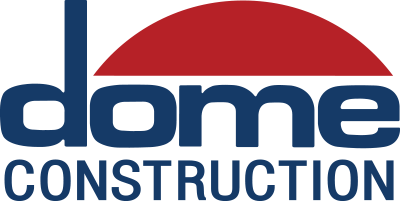Why do we build healthcare? Construction is more than just our chosen profession, and we don’t select projects simply because the work is available.
At Dome, we understand that there’s more to it. If those were the reasons, we would stick to the easy work, the work with the least risk and the most reward, or profit. The construction market is booming, with plenty of commercial work to go around, and plenty of tenant improvement projects in process. In the midst of this boom, there’s a growing demand for more and better healthcare facilities, especially as the Boomer generation ages.
At Dome, our team actively seeks jobs that go beyond that demand, jobs that have more meaning than black numbers at the bottom of a balance sheet. With over four decades specializing in healthcare construction, we have built a team of experts that primarily focus on creating spaces within the healthcare and Life Science industry. Tim Cadenasso, Associate Director and healthcare project specialist notes, that working in the healthcare field allows him and the Dome team to see the positive change their work brings to people.
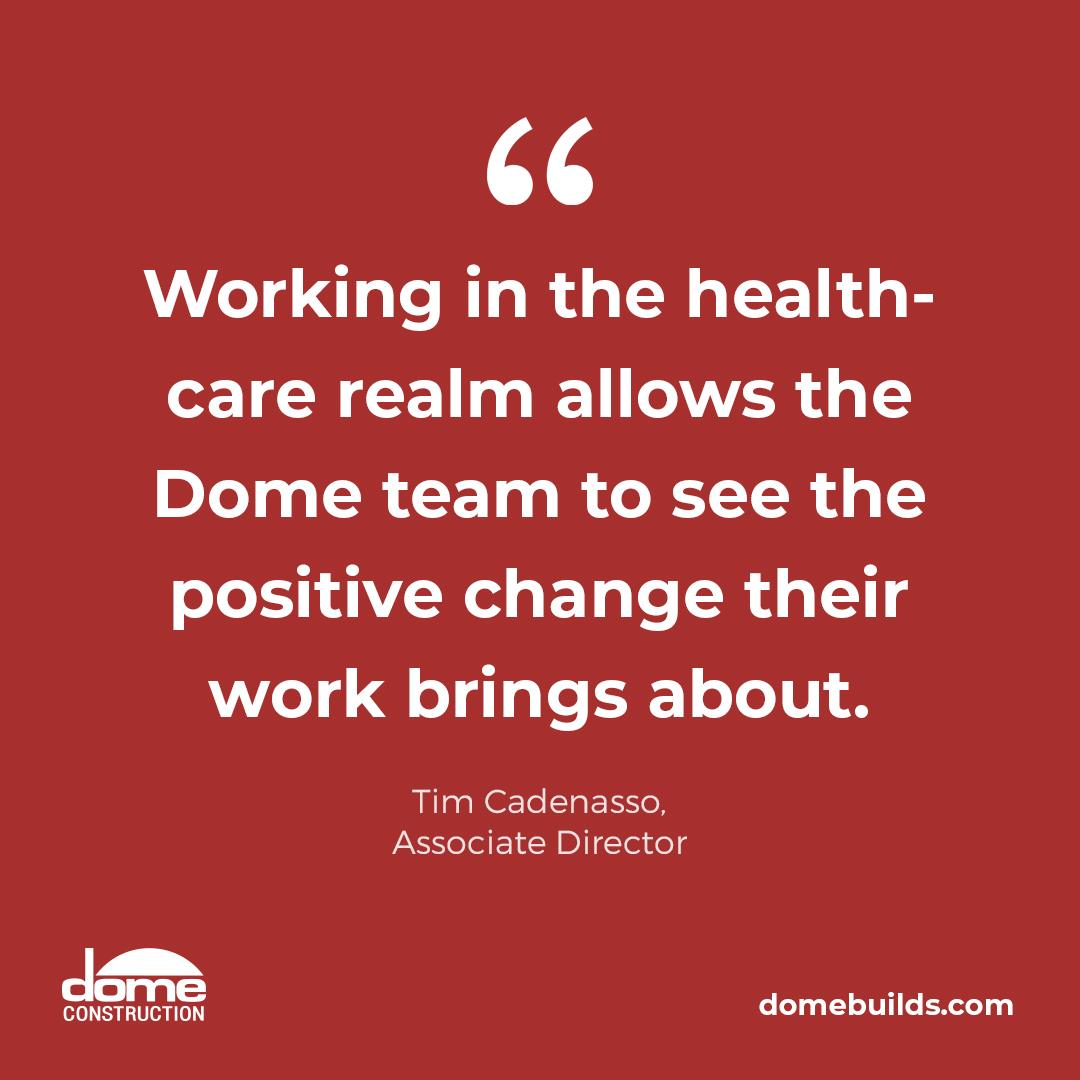
There are so many examples of how Dome’s work has affected people, and a shining example of the changes that can be seen in Dome’s recent renovation to the UCSF Radiology Department. “Before we went in,” according to Cadenasso, “There was a holding room with only six beds, and no real room for family members, significant others, or friends. Some patients would even have to wait in the corridor, on their beds and in their gowns in the full view of the public. Through the expansion and redesign, the holding area grew to hold 11 beds, as well as providing a seating area for patients families.”
“It became bright, and welcoming,” says Cadenasso, “which helps to create a better healing environment.”
This idea of driving the healing process through better design of the healing space has only become a prevalent way of thinking in the past decade or so. Prior to that, healthcare spaces typically placed factors such as pure functionality, doctor-centric design, and harsh budgeting at the top of the list when it came to renovation projects. For many of us, we grew up going to doctors’ offices and visiting hospitals that were sparse, with industrial-grade materials and harsh fluorescent lighting. Dark, dim, institutional was the reoccurring theme – and often separated the patients from their families and support systems.
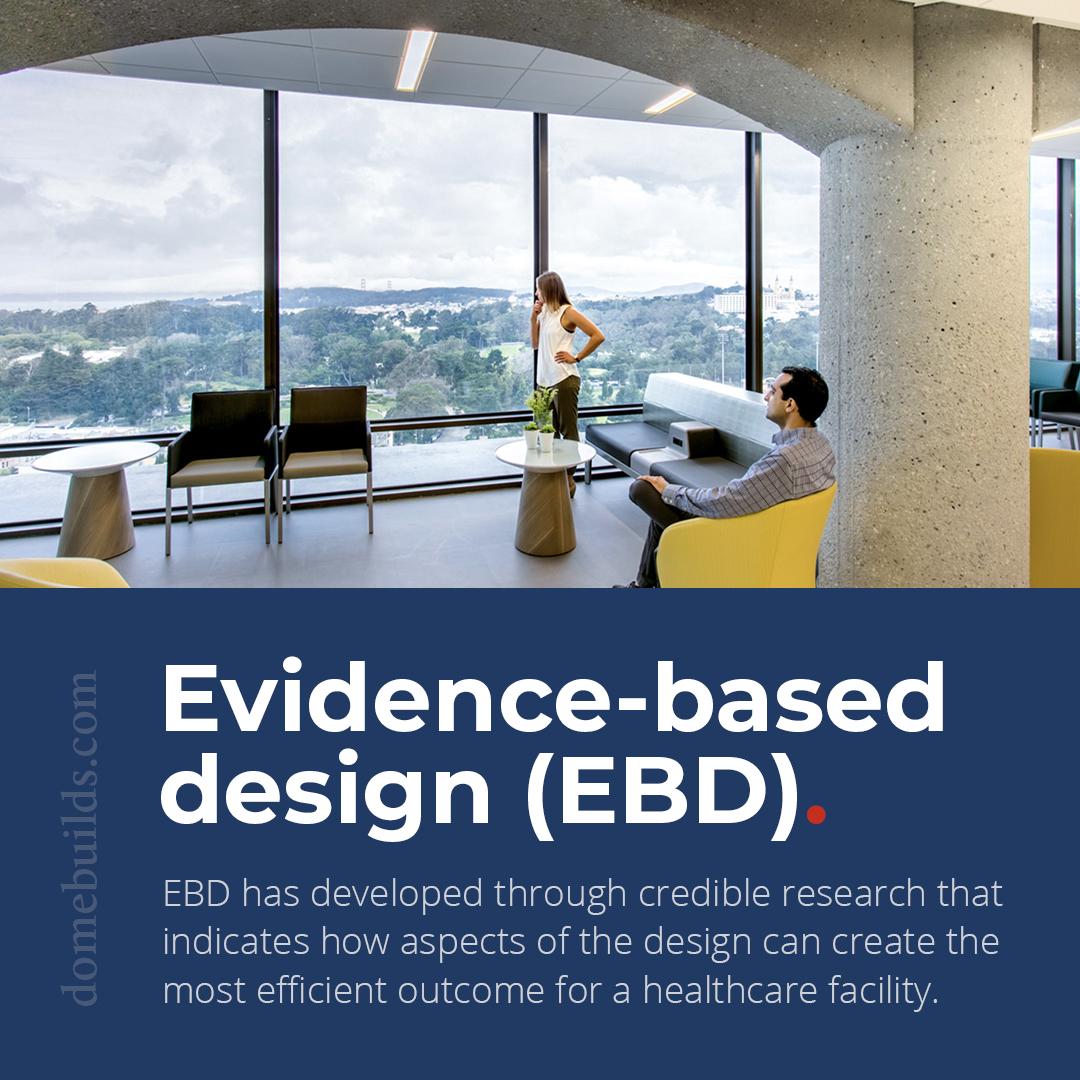
Evidence-based design (EBD) has developed through credible research that indicates how aspects of the design can create the most efficient outcome for a healthcare facility. Extensive research from Roger S. Ulrich, PhD and Craig Zimring, PhD looks at studies that link the physical design of hospitals to key healthcare outcomes. From patient safety issues such as infections and medical errors, to patient impact, such as pain, communication, and social support. Their research shines a light on just how much even the smallest environmental change in a care facility can impact outcome. Ideas such as keeping the patients with their families and support systems, providing natural light, offering welcoming surfaces and designs. In addition, they address the design impact on staff as well, reducing stress and injuries.
Becker’s Hospital Review summarizes many of these points, and notes that these spaces don’t just have those impacts. In addition, EBD saves costs and adds value to buildings, making them more appealing to shareholders and investors. By utilizing EBD, we can repurpose older buildings instead of needing to erect new buildings, keeping an eye on sustainability and environmental impact. On top of that, EBD facilities are more attractive to healthcare professionals over outdated, institutional facilities, as they enhance workflow and improve workplace satisfaction, meaning that they can be a recruitment tool that attracts the top talent in the healthcare field.
By becoming experts in the area of building utilizing the principles of EBD, Dome can tackle projects that use these principles with authority. In our robust current market, these jobs are no longer awarded solely based on the lowest quote. They are awarded at the intersection of quality and price – the best value. By constantly addressing healthcare jobs with our core values in mind, by operating with the idea that making a difference is a higher concern than making more profit, we provide an incredible value to the healthcare providers within the Bay Area.
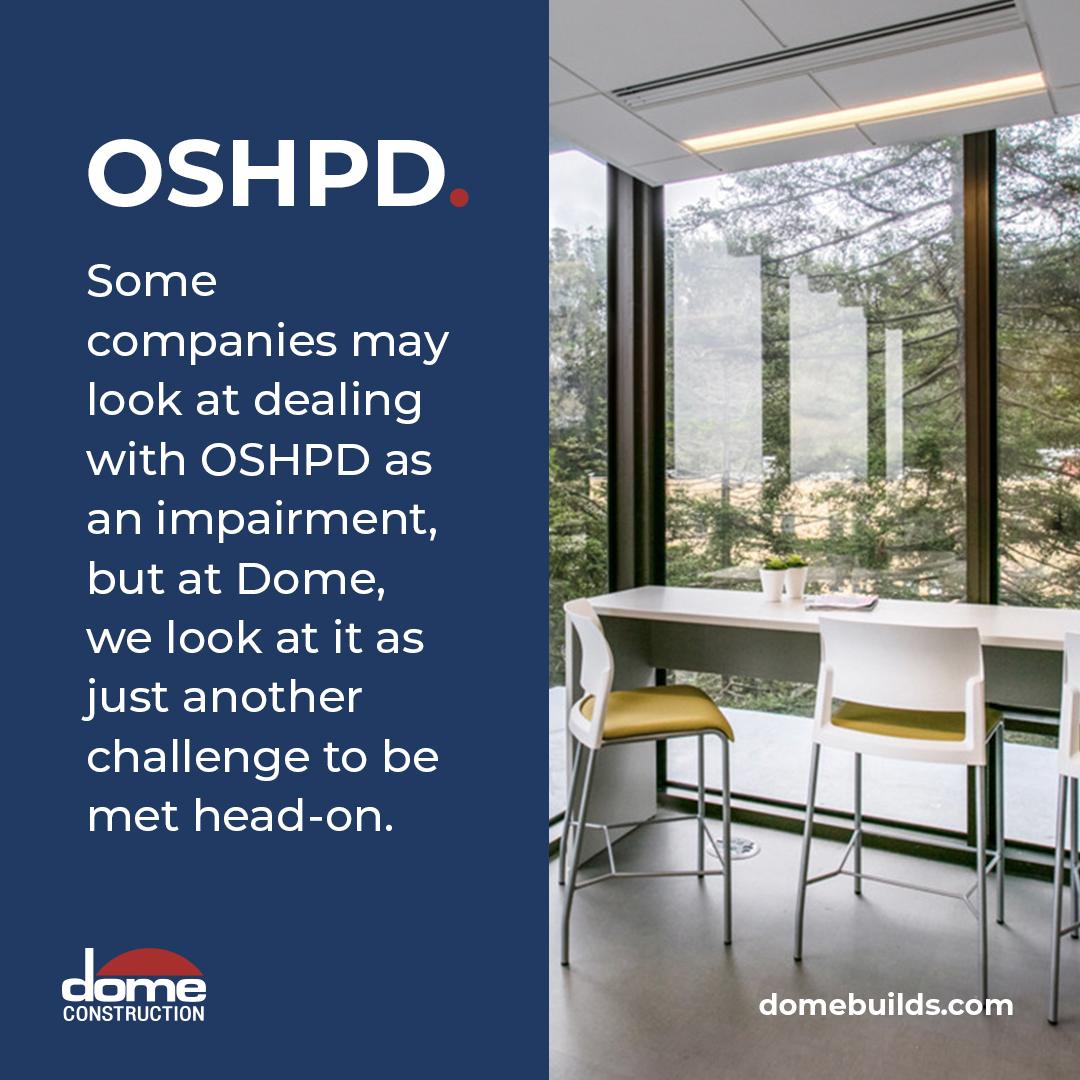
In California, healthcare work comes with the added task of coordinating with the Office of Statewide Health Planning and Development (OSHPD), and making sure that new builds and renovations meet their standards. What OSHPD does is imperative to ensuring that every patient across the state gets the best care possible – implementing rules and regulations while helping to innovate and ensure safe facilities. Particularly with the environmental issues that we deal with across the state, including fires and the regular threat of seismic activity, their oversight is essential. Unfortunately, this can also result in a slower construction process, and hurdles along the way.
Some companies may look at dealing with OSHPD as an impairment, but at Dome, we look at it as just another challenge to be met head-on. Part of why we build in these healthcare facilities is that we feel that tackling the challenges that can arise though taking on healthcare jobs also function as opportunities for our team to learn and grow, to develop skills that can be used in other projects and roles. In turn, it allows them, and us as a company, to be more agile and better able to address the growing demand for healthcare.
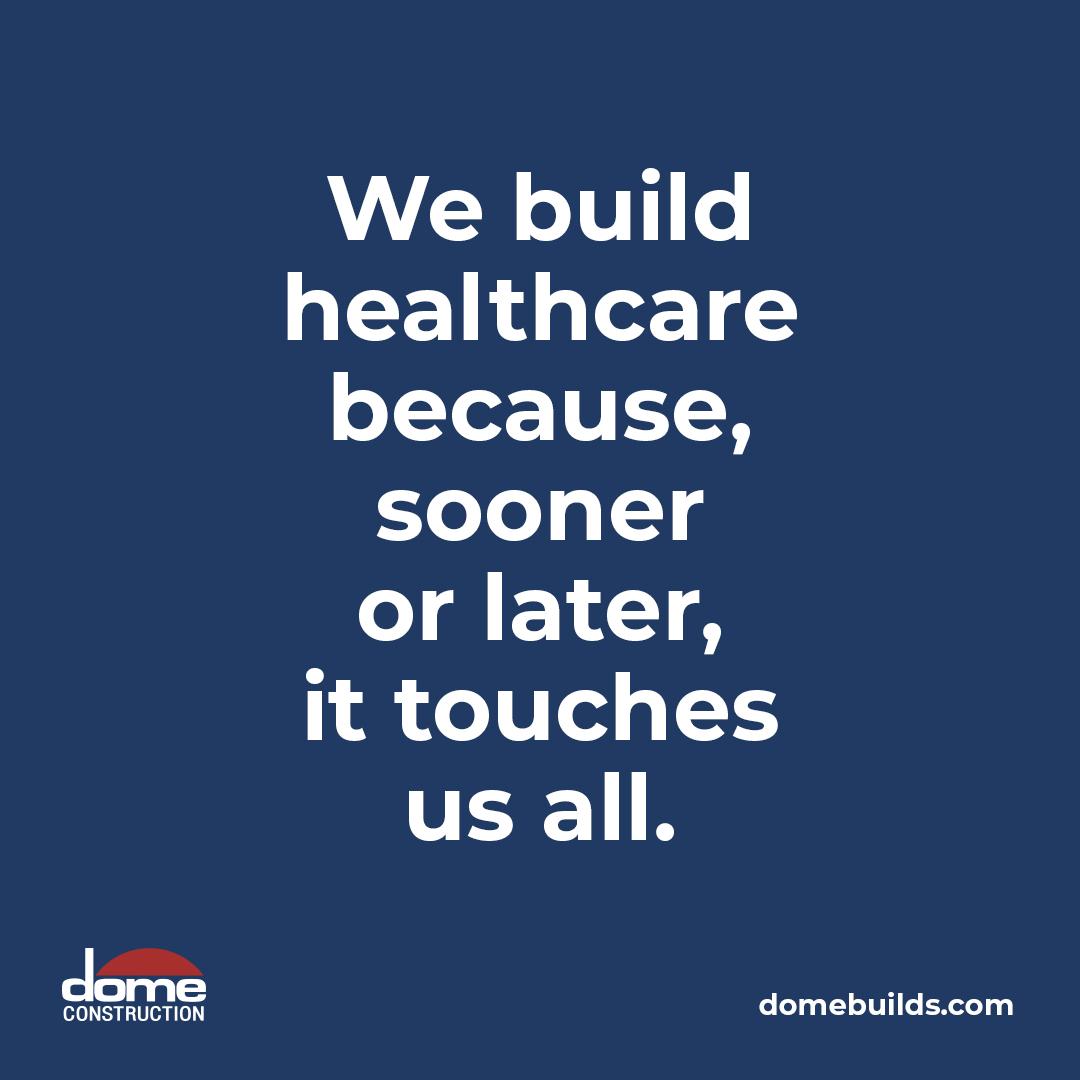
So why do we build healthcare at Dome? We build because it helps to make a difference in our community. We build healthcare because, sooner or later, it touches us all. Ourselves, our families, our friends, our neighbors – we all will spend time in the doctors’ offices, hospitals, and waiting rooms. We want to provide the healing spaces that will help to provide the best outcomes. We want to develop projects that will help to keep families together, help to heal, and support our communities.
With the ability to do that, you’d have to wonder – why wouldn’t we build healthcare?
